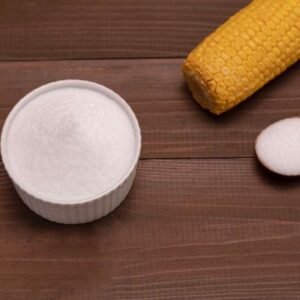
Report Warns “Forever Chemicals” Breach Skin
It’s easy to think of our skin as an effective barrier.
After all, it holds its ground daily against all kinds of invading forces, protecting our vulnerable organs within.
But the truth is our skin isn’t as tough as you might imagine. In fact, the barrier myth is beginning to crumble under the weight of a growing number of recent studies.
One disturbing study in particular has revealed just how vulnerable we are…
Recently, researchers uncovered a shocking truth. Our skin is far more permeable than we ever imagined.
Unfortunately, this leaves us vulnerable to the growing toxic threat of “forever chemicals.”
An alarming study at the University of Birmingham found that PFAS chemicals (per- and polyfluorinated alkyl substances) can easily pass through human skin.
These pollutants have already infiltrated our water, air, and food supply. But now we know they can ALSO find their way inside our bodies, right through our skin.
Even worse, industry giants like DuPont—the creators of Teflon—have long been aware of the dangers. Internal documents dating back to 1961 reveal that their own toxicologists recognized the potential hazards of skin contact with certain PFAS compounds.
Yet this crucial information was hidden from the public for DECADES, allowing these chemicals to proliferate unchecked in countless consumer products.
Fast forward to 2024, and we’re only NOW beginning to grasp the full extent of this crisis.
With over 12,000 PFAS variants on the market, we’re drowning in a sea of potentially harmful chemicals whose long-term effects on human health are still shrouded in uncertainty.
It’s an absolute travesty that independent scientists are only now uncovering what industry insiders have known for over half a century.
Entirely avoiding PFAS chemicals is likely impossible. But you can reduce the risk to yourself and your loved ones by taking these crucial steps:
- Filter your drinking water: Invest in a certified high-quality water filtration system to remove PFAS. Reverse osmosis and activated carbon filters are among the most effective options.
- Scrutinize your cookware: Discard non-stick pans and opt for safer alternatives like cast iron, stainless steel, or ceramic-coated cookware.
- Beware of food packaging: Avoid grease-resistant food wrappers, microwave popcorn bags, and takeout containers. Choose fresh, unpackaged foods whenever possible.
- Replace personal care products: Carefully examine the ingredients in your cosmetics, sunscreens, and toiletries. Avoid products containing “fluoro” ingredients or PTFE, which we now know can penetrate the skin.
- Rethink your clothing: Steer clear of water-resistant and stain-resistant clothing and fabrics, which often contain PFAS.
- Clean smarter: Ditch stain-resistant treatments for carpets and furniture and use natural, PFAS-free cleaning products. Our friends at the Environmental Working Group can help you find safer ones.
- Read labels vigilantly: Look out for red-flag terms like “non-stick,” “waterproof,” or “stain-resistant” on product packaging.
- Support PFAS-free initiatives: Use your consumer power to support companies committed to eliminating PFAS from their products.
- Advocate for change: Demand stricter regulations and better labeling practices from your local and national representatives.
Implementing these measures can significantly reduce your exposure to health-harming “forever chemicals.”
P.S. Is your water contaminated with PFAS? Find out!
Source:
Abraham, K., & Monien, B. H. (2022). Transdermal absorption of 13C4-perfluorooctanoic acid (13C4-PFOA) from a sunscreen in a male volunteer – What could be the contribution of cosmetics to the internal exposure of perfluoroalkyl substances (PFAS)? Environment International, 169, 107549.
Written By Dr. Scott Olson, ND
Nearly 25 years ago, failed mainstream medical treatments left Dr. Olson in constant pain – and his health in ruins. And that’s when he did something REVOLUTIONARY. He began his career in medicine – and dedicated his life to uncovering the true, underlying causes of disease.
Through his innovative medical practices in Tennessee and Colorado, Dr. Olson has helped cure countless seniors from across America of arthritis… heart disease… diabetes… and even cancer. All without risky prescription drugs or painful surgeries.
View More Free Articles
A New Reason to Ditch Processed Junk
If you’ve ever walked the inside aisles of your local grocery store and thought, “This is all just junk,” your instincts were spot on. A new study published in the journal Thorax just added another red flag to the list of dangers linked to ultra-processed food—a 41 percent higher risk of lung cancer. That’s right....
When Being Winded on Stairs Is Serious (And When It Isn’t)
I had an athlete visit me recently because he experienced shortness of breath while climbing stairs. He is in great shape, so he was worried about what it might mean. “Doc,” he said, “I run five miles three times a week. Why am I huffing and puffing after two flights of stairs?” His concern is...
Study EXPOSES Hidden Danger Lurking in Your Car
We think of our homes and cars as safe havens. But according to a startling new study, they may be flooding your lungs with microscopic plastic particles—every single day. Researchers in France recently found that adults inhale an average of 68,000 microplastic particles daily from indoor air alone. To put that in perspective, that’s about...
Mailbag: Is Modern Food Making You Snore?
“What can cause snoring, and is there a way to correct this issue?” —Seeking Silence Hi Seeking, Snoring happens when the soft tissues in your throat relax and vibrate as air passes through during sleep. While several factors can cause snoring—from sleep position to nasal congestion—I want to share one trigger that might surprise you....
Simple Food Swap SLASHES Dementia Risk 28%
Let’s be honest… who would jump at the chance to cut their dementia risk by 28 percent. And no, you don’t need to run marathons, survive on broccoli, or learn to play the zither (whatever that is) to make it happen. All it takes is one easy swap—something that’s probably already in your refrigerator. Researchers...
This SMART Floss Exposes Hidden Health Danger
Scientists have created dental floss that doesn’t just clean between your teeth—it also tracks your stress while you’re flossing. Now, I know what you’re thinking… “Great—now even flossing is going to stress me out by telling me how stressed I am.” But this fascinating new tool from Tufts University could be a game-changer for understanding...
Is This "Safe" Sweetener Damaging Your Brain?
The headlines are alarming… “Popular Sugar Substitute Linked to Brain Cell Damage” and “Erythritol Could Damage Critical Brain Barrier” are just two of the dozens I’ve spotted recently. But before you toss every sugar-free product in your pantry, let’s take a closer look at what this study actually shows—and what it doesn’t. The latest research...
This Summer Threat Could SPIKE Your Blood Sugar
Picture this… It’s another scorching hot summer day. You crank up the air conditioning while watching the weather forecast, which predicts yet another “record-breaking” heat wave. It’s starting to feel like just another miserably uncomfortable summer. But what you might not realize is that—if you have diabetes—those rising temps could do far more damage to...
Move Over Yogurt—5 Foods That Pack MORE Probiotics
Let’s talk about your gut. The microbiome is the collection of trillions of bacteria and other tiny organisms that live in and on your body—especially in your gut—and help keep you healthy. I’ve written often about how vital it is to maintain a healthy microbiome. And you might have dutifully added yogurt to your shopping...
Is Your Heart Older Than YOU?
Maybe you feel young for your age. Good energy, decent sleep, eating your veggies. But what if I told you your heart might be a decade older than the rest of you? That’s exactly what researchers at Northwestern University found in a new study published in JAMA Cardiology. The average American woman’s heart is about...









